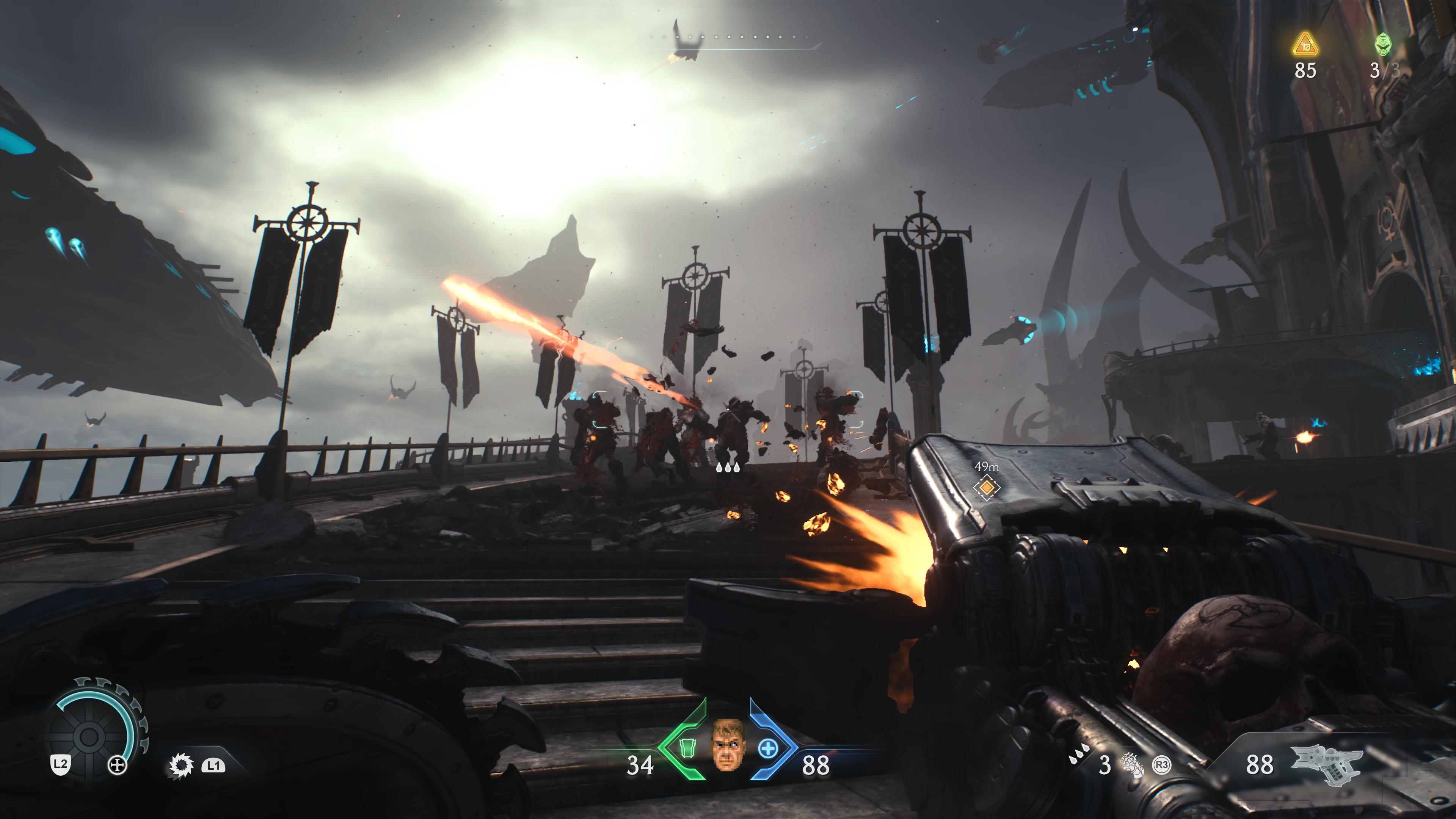TechRadar Verdict
Doom: The Dark Ages is a good shooter at its core, but as a follow-up to two of the best FPS games ever made, it falls a little flat. The new defensive combat feels like a step back, with movement getting a significant nerf, and, while Doom Slayer is still an exciting character, the story focus feels out of place.
Pros
- +
The guns feel great to shoot
- +
Big levels packed with secrets
- +
The Slayer is still a powerful presence
- +
Great boss-filled third act
Cons
- -
Movement is severely nerfed
- -
New characters aren’t interesting enough to the justify story focus
- -
Dragon and Mech stages are very basic
- -
The Dark Ages concept isn’t fully explored
Why you can trust TechRadar
Id Software’s Doom series made a hell of a comeback in Doom (2016) with one of the best FPS campaigns of all time. This was followed up by 2020’s Doom Eternal, which turned every element of the series to an extreme level with a faster pace, enhanced weapons, and some of the most satisfying movement in any shooter; it was Doom by way of Devil May Cry. However, rather than go even more extreme, Doom: The Dark Ages takes on a medieval theme where instead of a Formula One killing machine, you’re a tank.
Platform reviewed: PS5
Available on: PS5, PC, Xbox Series X, Xbox Series S
Release date: May 15, 2025 (early access May 13
The Slayer (or, to give him his full name, Doom Slayer) is far slower than usual; there’s a sprint button as opposed to him just being naturally fast, and there’s nary a double jump or dash in sight. You’re heavy, you’re bulky, and you’re blocking all manner of attacks.
A shield is introduced very early on in Doom: The Dark Ages. Enemies will throw out attacks that glow green, meaning they can be parried, which you will soon realise is the central mechanic of the game.
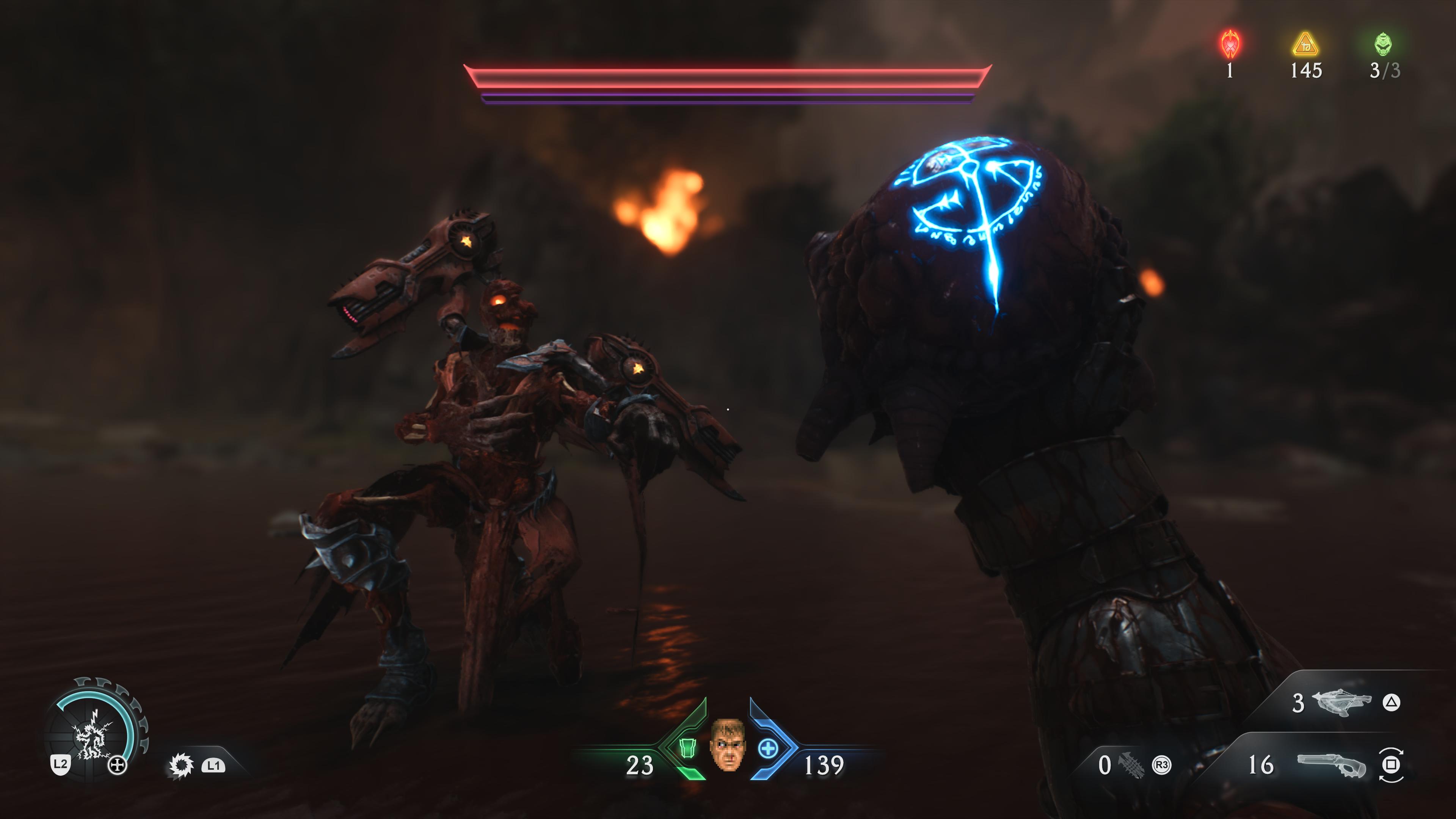
The only thing they fear is you
The Slayer is built around defense, which is a far cry from the previous two entries and results in the stylish combat feeling a bit more barebones. The right move often feels like sitting back and having the enemy come to you, as opposed to you being the final boss tearing through every environment.
That doesn’t mean the combat doesn’t have its moments, though; the chainsaw shield throw is a bit of kit that feels incredibly satisfying from the moment you get it until the finale.
Throwing the shield into a large demon results in it getting lodged inside of it, which – with an upgrade – will let you shoot at it to create a ricocheting death machine. There are flashes of Doom’s trademark style, but it doesn’t quite have the sauce that was found in previous entries.
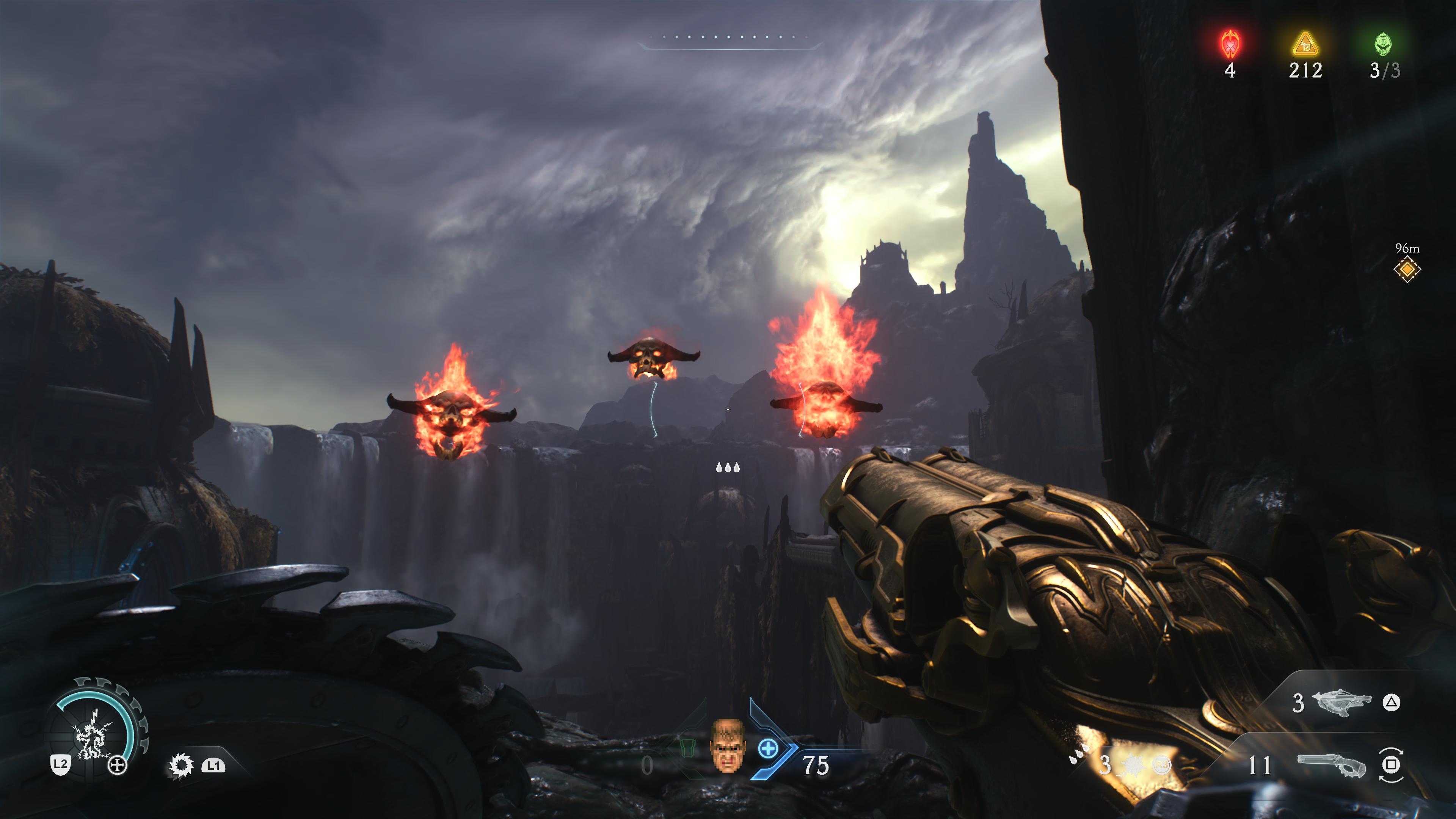
That being said, the actual shooting still feels fantastic. The Super Shotgun continues to be the greatest gun known to man. Meanwhile, the new Ravager weapon – which grinds up skulls and shoots out bone shrapnel – is a brilliant concept, and the ball and chain launching chainshot is so satisfying to charge up and blast off the skull of a demon with. Even if the Slayer doesn’t feel as good to control, his guns sure do.
Sign up for breaking news, reviews, opinion, top tech deals, and more.
Difficulty-wise the game strikes the perfect balance. I played on Ultra-Violence (hard), and it felt like the right amount of tough; countless adrenaline-filled moments of near death, where you’re parrying for your life, make for some of combat's highlights.
The combat is also extremely customizable, with the likes of parry windows and damage sliders being adjustable. Although there is nothing quite as terrifying as the Marauder battles from Doom Eternal, which would push you to your limit constantly.
The graphics look incredibly crisp – especially on PlayStation 5 Pro – even with all the gore and particles on screen, I never noticed any framerate drops on both the base PS5 or the Pro. The game does have some DualSense Wireless Controller features like adaptive triggers for the guns and use of the controller speaker (although the latter borders on the obnoxious as sound effects get doubled).
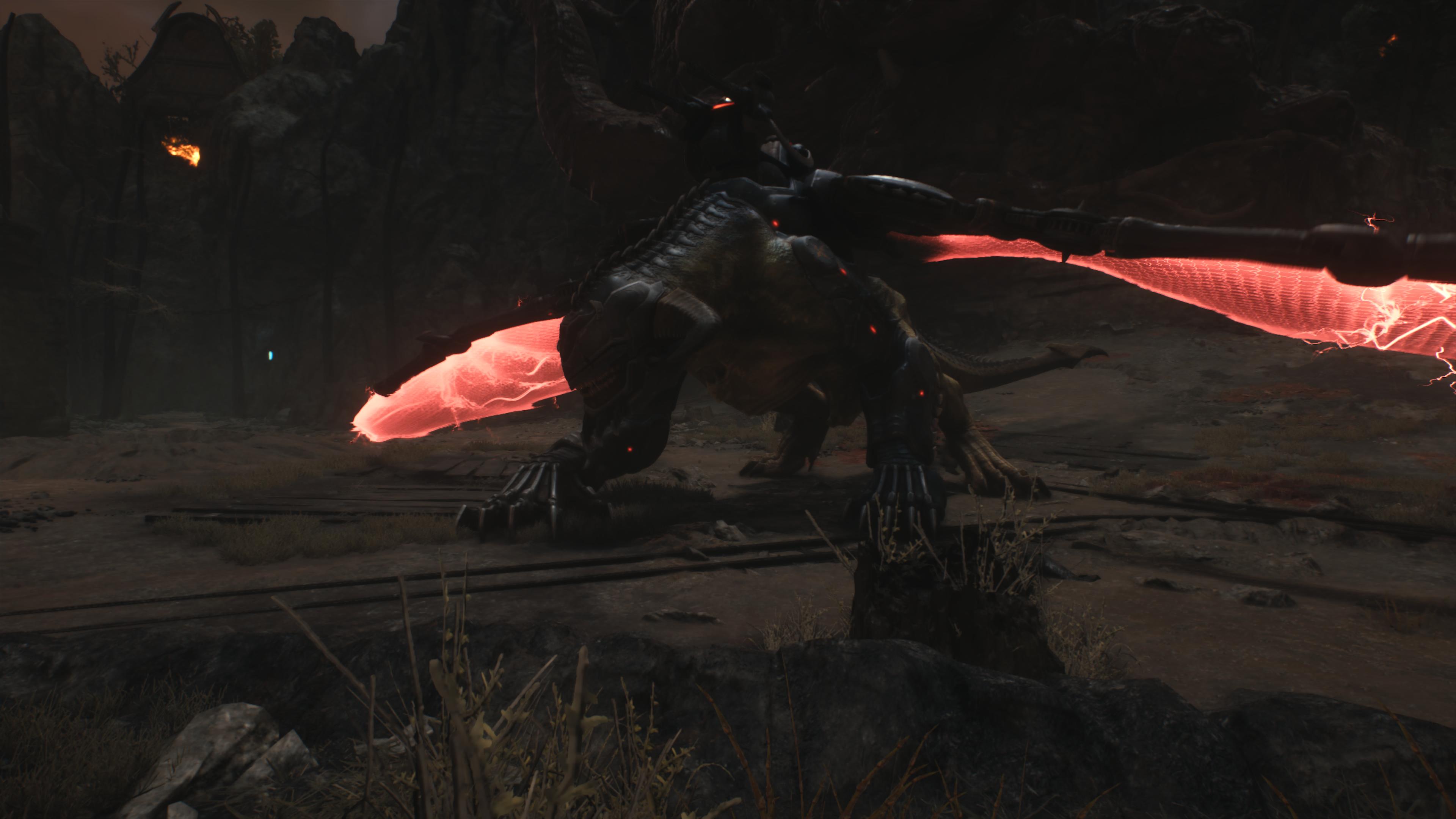
BFG Division
The levels found in Doom: The Dark Ages are a mixture of classic Doom and some new ideas. While the dense, secret-filled gauntlets are still present and accounted for, id experiments with a semi-open world formula for some of the new levels.
These levels will plop you into a domain and let you run free, taking on objectives in any order you please, and allow you to explore all corners of the map looking for upgrades and secrets. While some don’t feel quite as clean as the more focused levels, it's a nice way to change things up.
The other two additions are Mech and Dragon stages. These are used as nice distractions to break up the pace and are undoubtedly cool set piece moments; however, it becomes clear once you reach the second one of each that there’s no real progression between them.
Both revolve around a dodge-then-attack format, with the dragon having some aerial chases to segue between areas, but they feel pretty identical the whole way through and are a little half-baked.
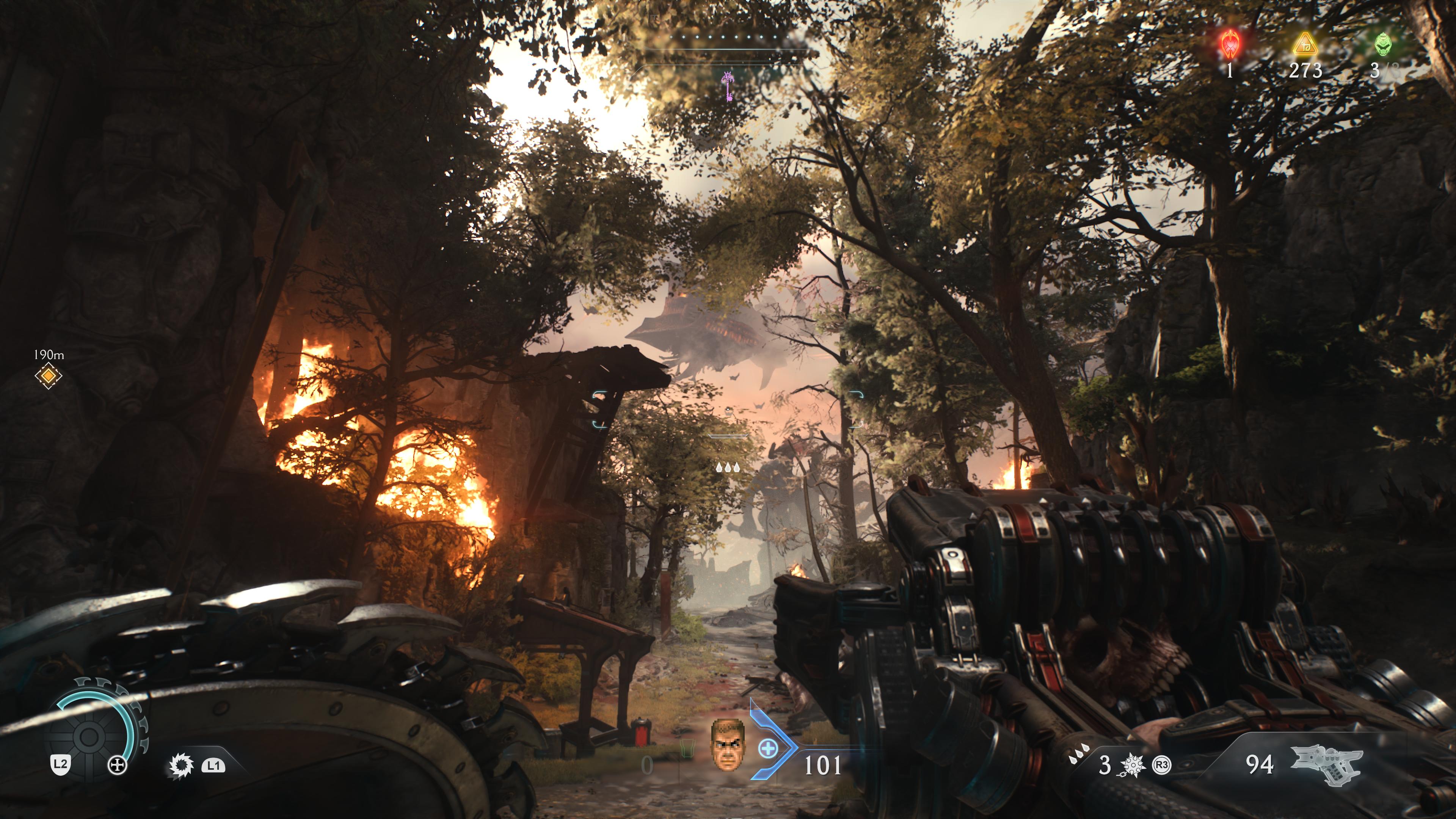
During the final act the story goes into overdrive and you’re faced with a number of great boss fights and set piece moments that round things off with a bang.
Another thing I didn’t think the developers went far enough with was the dark ages concept itself. While there’s fantasy iconography with the Slayer’s sick fur pelt cape and the melee weapons, there’s really not much that separates this from regular Doom.
It’s still fused with sci-fi, so there are still energy weapons; in fact, only the Ravager and Chainshot feel uniquely dark ages. The environments are pretty different at least, swapping Mars and destroyed Earth cities for large battlefields.
The roster of enemies have all gotten redesigns to fit the theme, but some are a massive step down. The Cacodemon – which is typically a pretty goofy-looking monster, bordering on cartoonish – looks unrecognisable as the team goes for a more realistic style. However, the majority of these are fantastic, with the Imps and Mancubus being the highlights.
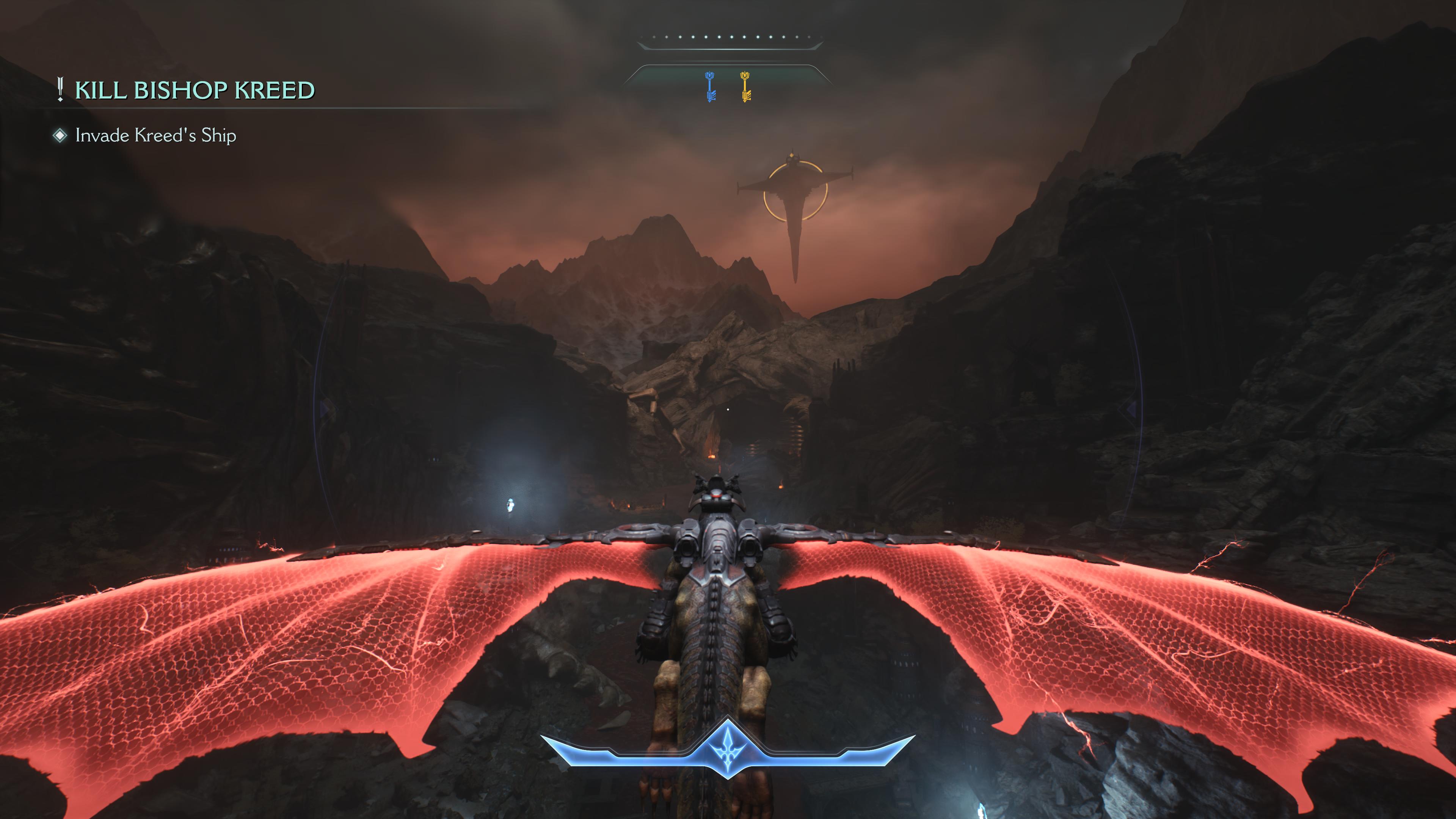
Hell on Earth
Story is a big part of Doom: The Dark Ages, which means even more cutscenes. It centres on The Slayer being a tool in a war between Sentinels and the forces of hell.
The game introduces a ton of new characters who are new to the series, but outside of the Kreed Makyr and main villain Ahzrak, there’s not much to write home about. There’s a cast of human characters with their own plight, but it wasn’t engaging, and whenever they were on screen, I just found myself wishing I was playing or watching the Slayer do something.
The Slayer is still great, though. Right from the beginning it’s still established that he is that guy. Everyone talks about him with hushed tones; he’s treated like a bogeyman by the denizens of hell, and the moment he steps foot on the battlefield, the entire aura changes. It’s full of him doing superhuman feats that border on silly in how over the top they get, and despite my lack of interest in the overall plot, id Software nails it when he is on screen.
The previous two entries in the Doom series were all-time great FPS campaigns, but they were also top-tier albums, as Mick Gordon’s soundtrack work on them was incredible. However, after controversy with the Doom Eternal soundtrack, Gordon hasn’t returned for this. One of the best things about his soundtracks was the blend of metal riffs with excellent synth work, over just being straight metal. However, sadly, The Dark Ages goes for the straight metal approach. and it just doesn’t hit the same. None of the music is bad, but it’s not entirely memorable either.
Doom: The Dark Ages features an excellent FPS campaign with satisfying gameplay, best-in-class shooting, and great set-piece moments. At the end of the day, its biggest sin is that it doesn’t live up to what came before.
The decision to slow combat down and scale back the Slayer’s movement makes things feel like a step back and takes away some of the flashy style. I wish it did more with the medieval setting, but it’s still a great shooter campaign that continues to prove why id Software is at the top of the FPS mountain.
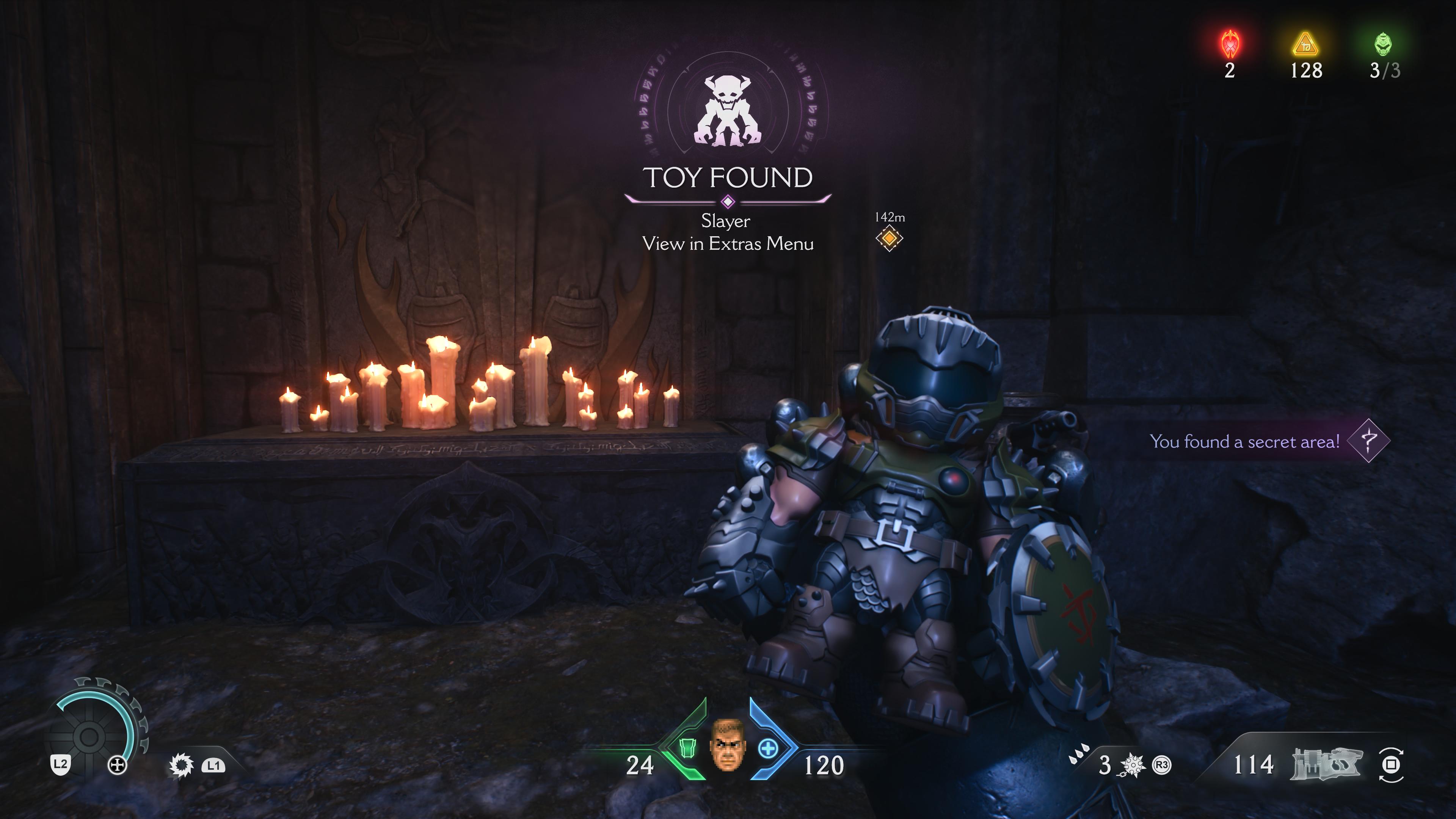
Should you play Doom: The Dark Ages?
Play it if...
You want a nice, long single-player campaign
Doom: The Dark Ages’ campaign clocks in at about 15-20 hours, with each level being packed with collectables and secrets to find. There’s also challenge modes available like Ultra Nightmare, for those who really want to test their limits.
You like satisfying shooting and parries
Doom remains second-to-none when it comes to satisfying gunplay, each shotgun blast feels devastating thanks to great visual and sound design. While the new weapons are unique and welcome additions to The Slayer’s arsenal and the parries are plentiful and impactful.
Don't play it if...
You want a multiplayer shooter
While Doom (2016) and Doom Eternal both had in-depth multiplayer modes, Doom: The Dark Ages has skipped it entirely, the single-player campaign is all you’re getting this time around.
Accessibility
Doom: The Dark Ages has one of the strongest accessibility suites I've seen recently.
All the controls are able to be remapped, plus you’re able to freely tune each difficulty to your own standards (such as changing damage values, parry windows and game speed).
The game features subtitles, font and HUD scaling on the UI, as well as customisable colours for effects such as parries. There’s also colourblind modes although these are found in the ‘Video’ options menu rather than the ‘Accessibility’ menu.
How I reviewed Doom: The Dark Ages
I played 30 hours of Doom: The Dark Ages between a PS5 Pro on a Samsung Q60D TV and a Samsung HW-T450 soundbar. I also played on a PS5 on a Samsung Odyssey G5 gaming monitor with a PlayStation Pulse 3D Headset.
During this time I completed the game on Ultra-Violence difficulty, with no difficulty modifiers turned on. I didn’t use the Life Sigils for an instant revive during combat, only during segments where I was exploring. I got 100% completion in all but two levels (having replayed a few levels to nail down those last few secrets).
First reviewed March 2025

Scott has been freelancing for over two years across a number of different gaming publications, first appearing on TechRadar in 2022. He has also written for the likes of PC Gamer, Eurogamer, Push Square, The Daily Mirror, and others. He's typically rambling about Metal Gear Solid, God Hand, or any other PS2-era titles that never get sequels.
You must confirm your public display name before commenting
Please logout and then login again, you will then be prompted to enter your display name.
